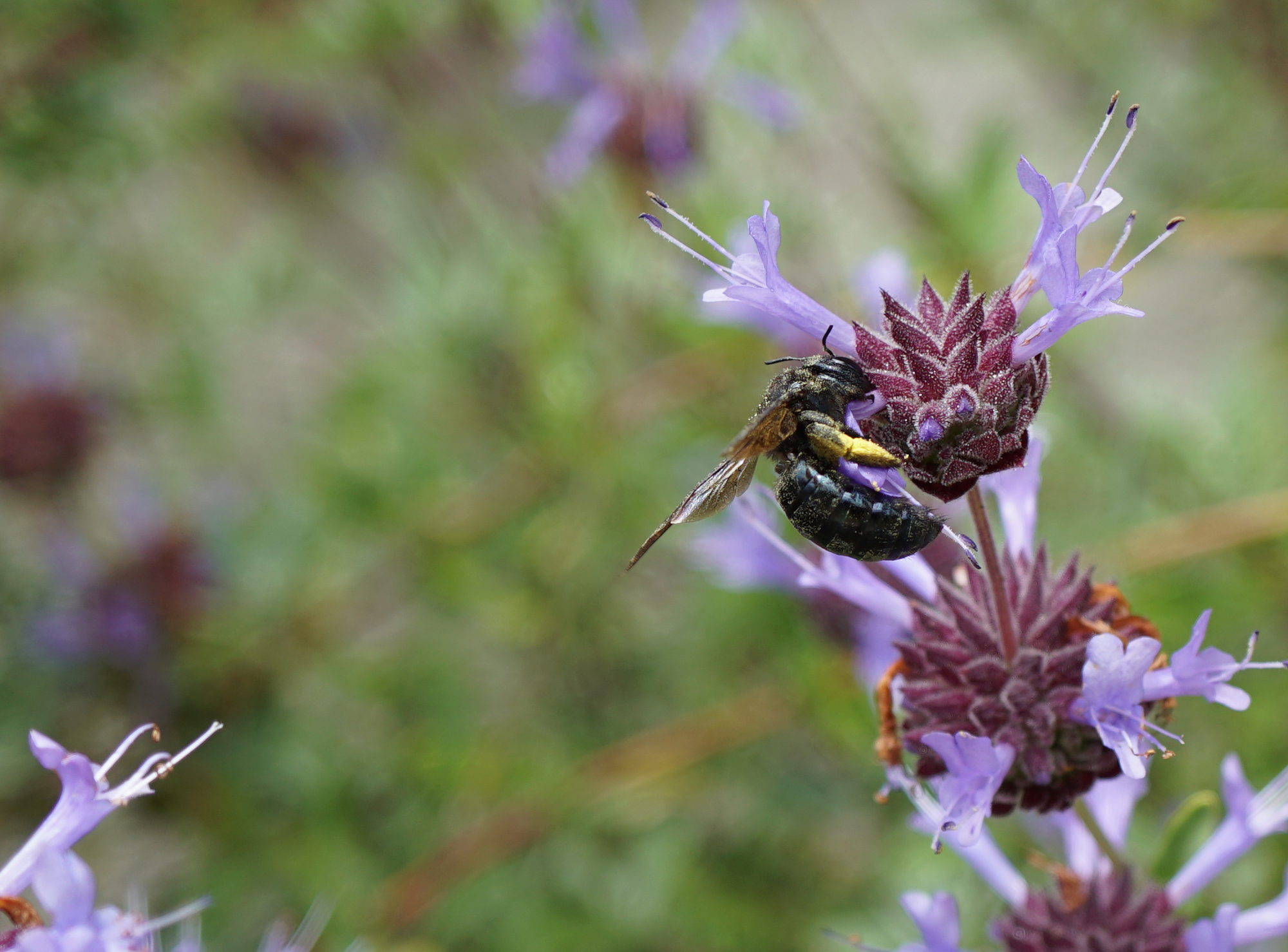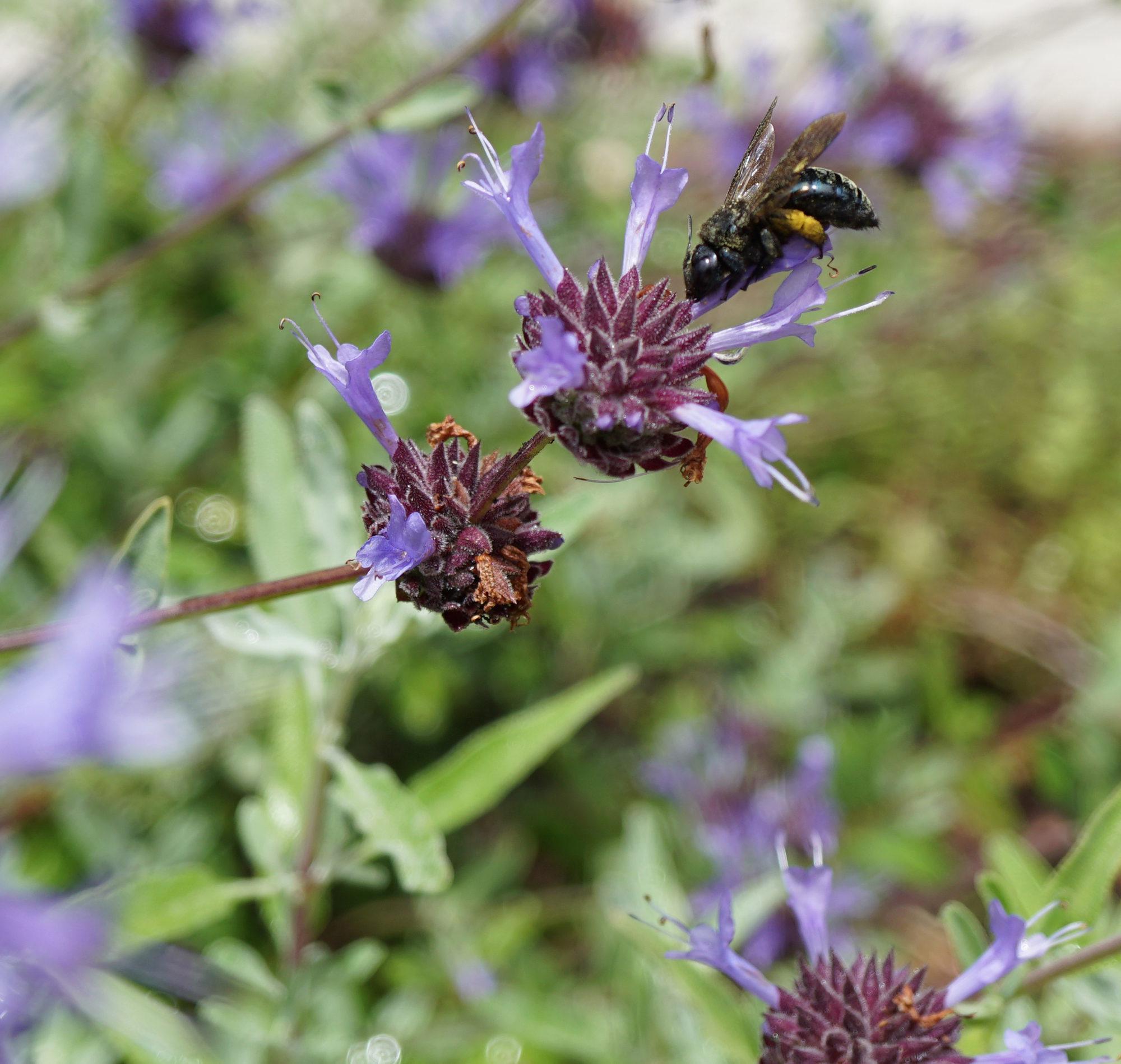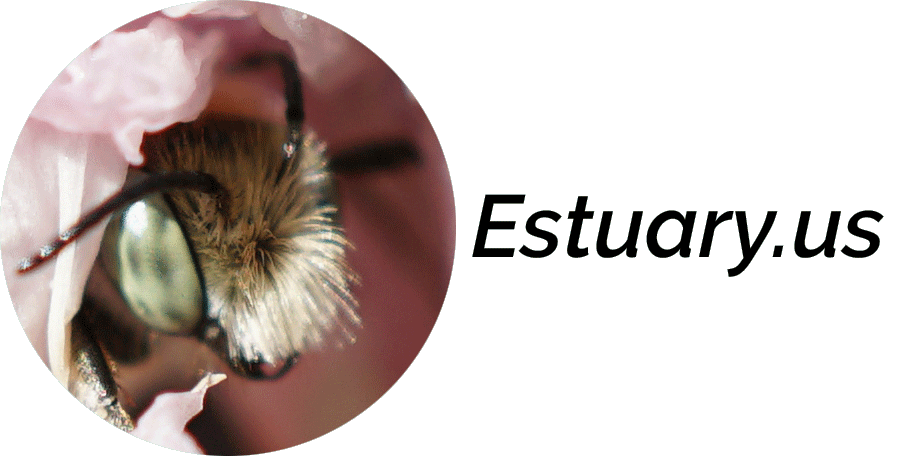We are the Xylocopa, more commonly known as the carpenter bee. Xylocopa is a member of the Apidae family. Our relatives include our naturalized European cousin the honey bee, Apis mellifera and the Bombus species, common name bumblebee.

By the way, A. mellifera will not sting unless its life or nest is threatened. The author writing this on my behalf has hiked single-track trails overgrown with invasive mustard where hundreds of A. mellifera were working the flowers, but she has never been stung. Same with the furry Bombus, that is a buzzy one, too busy working flowers to sting, unless pressed.
We of the Xylocopa tribe are formidable in appearance. Indeed we are the largest of the bees found in California. We are important pollinators of native plants and we also assist in pollinating some human crops. The male Xylocopa is a master of the bluff attack: He is a territorial and ferocious defender of nesting spots despite the fact that he has no weapon aside from his drive to protect. Our species nests in soft wood and hollow yucca or agave stems. We may also nest in untreated wood that is part of your property, but if you worried about structural damage, be assured that we are nothing like termites. We do not eat wood! We do hollow out a small cavity to build a series of cells for our young to grow in. The female packs pollen and nectar into each cell for the young bee, seals the cell with wood chips (that she saved from the hollowing process) and starts work on the next cell.

A male of our species will sometimes scare a human by flying directly at his head. A human who knows a thing or two about our lot may chuckle when she observes the reaction of a person who does not understand what this large buzzing insect is, much less why it is coming at him.
Yes, the male Xylocopa might chase your around the yard, in defense of a nest, but he cannot sting you because he does not have a stinger.
If you want to see us in your yard, do plant native flowering shrubs and plants. Be patient for a season to give us time to figure out why there might be a good reason to come near you, and never, ever use pesticides or herbicides. When the fresh-faced young man comes knocking with a well-prepared pitch intended to scare you into killing all the insects in your yard, because a coven of black widows is hatching a plan to invade your house, just say “No, thanks.”

Covens sometimes get a bad rap due to the enduring patriarchal bent of Homo sapiens, but they are pretty much isolated to the human domain. Black widows do not do group think. But the human writing this digresses, so to get back on topic: If you are applying pesticides to kill ants and spiders, you will see fewer of them of course, and you will see us, the mighty Xylocopa, not at all.
Insider tip: To keep spiders at a minimum, you can clear suspicious looking spider webs away from any areas you frequent outside such as patio furniture. Do this during daylight hours when spiders are inactive, every three days or so during the summer. No webs, no spiders. To the untrained eye, black widow webs look completely disorganized without symmetry, with roughly a triangular shape, if one is prone to thinking in shapes.
In closing, you humans and your problem with ants! Ants? Really? Those bugs are socially organized like the Borg. They have super-colonies that range down into South America. Even if you take your own species (and ours) out, they will adapt, survive and rebuild.
Sincerely not yours,
X. californica
